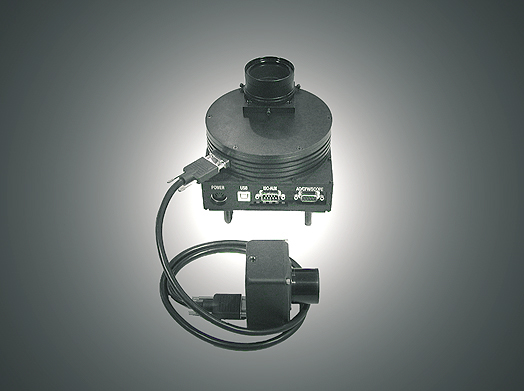 |
Announcement
Remote Guide Head Available
for ST-7/8/9/10/2000 Cameras
Update: March 17, 2006
Sometimes two heads are better than one ...
 |
Remote Guide Head
Now you can add a second head to your ST-7/8/9/10/2000 camera and guide using the internal tracking CCD or the external Remote Guide Head. The single sensor "I" versions of these cameras can also add the remote head for external guiding only. Originally designed for the large format STL cameras, the Remote Guide Head contains a cooled TC-237 CCD with 657 x 495 pixels at 7.4u and 16-bit A/D. This is the same CCD that is used as the built-in tracking CCD on all of our dual sensor, self-guiding cameras. It is also the same sensor used in the stand-alone STV autoguider and the former ST-237 CCD camera. By popular request, we have added support for the STL Remote Guide Head to the ST-7/8/9/10/2000 series (single sensor and dual sensor models) for those who want to put the guiding CCD in front of the filter wheel by way of an off-axis guider, or separate guide scope.
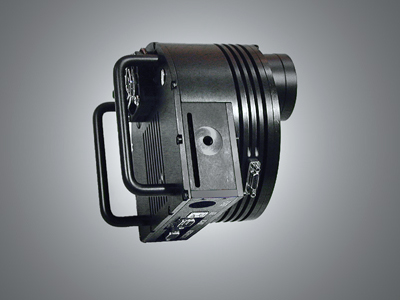 |
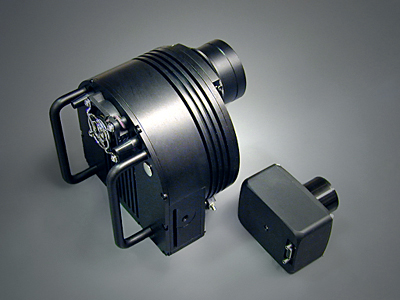 |
Remote Head Connector on ST series camera body |
Relative size of Remote Head next to ST series camera |
One of the main benefits of using the Remote Guide Head instead of a separate camera for guiding is that no additional power or computer connections are required. The Remote Guide Head gets power and control from the camera and it is controlled just like the internal guider by the same software program that is used to control the camera. Once installed, the user can select either the internal or external guider and all other software functions are essentially identical. Another benefit is that the Remote Guide Head can control both the AO-7 and AO-L adaptive optics units when used in an off-axis guider* placed between the AO and the camera/filter wheel. This allows the AO to be used with any filter in place and the guide star brightness will not be affected. Since the Remote Guide Head is also compatible with upgraded "I" versions of the ST-7/8/9/10/2000 cameras, a wide variety of choices are available to the user when putting together a system. The alternative for external guiding is to use a separate autoguider such as the ST-402ME. These also have advantages in terms of flexibility and independent control but they require their own power supplies and separate cables for computer connections. Separate guiders cannot control the AO units, unless you use the built-in guider in a second ST-7 camera. They will, however, guide continuously while the image downloads from the main camera whereas the Remote Guide Head acts just like the internal guider and pauses during download. However, software allows for automatic resumption of guiding with the Remote Head, including automatic re-acquisition and positioning of the guide star between exposures.
* Note: A custom made off-axis guider is needed to use the remote head to control an AO. We are working on this accessory but it is not yet available from SBIG, although there may be some third party solutions available.
eFinder
The Remote Guide Head is also compatible with the eFinder as a compact, high quality guide scope capable of tracking to arc second accuracy. The eFinder is a 100mm FL f/4 lens assembly that simply screws into the remote guiding head to make an extremely rigid, compact guide scope for piggyback operation. No mounting rings are required. The Remote Guiding Head has two 1/4-20 threaded holes for mounting on any piggyback bracket. In addition, our T-to-C adapter and CLA5 camera lens adapter fit the Remote Guide Head so that many C-mount lenses and 35mm camera lenses can be used for guiding or imaging.
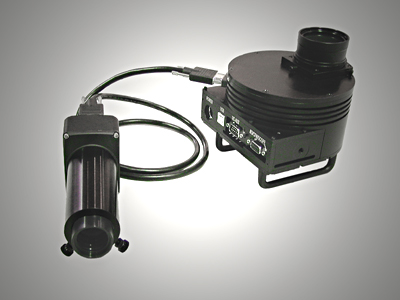 |
ST-2000XM with Remote Head and eFinder Guide Scope |
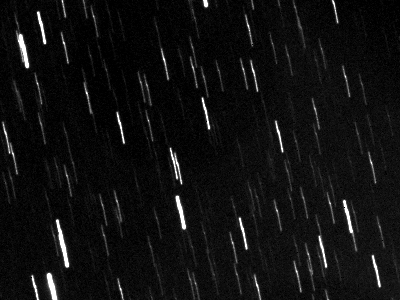 |
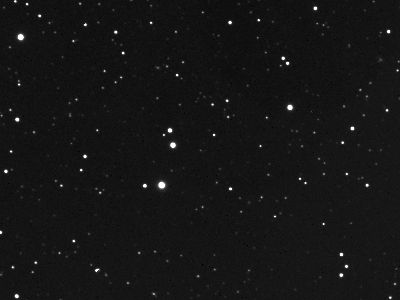 |
10 minute unguided image |
10 minute image guided with Remote Head and eFinder |
The guiding tests above were made on the same night through the same AP130 telescope on an AP400 mount using an ST-2000 camera. The Remote Guide Head with eFinder lens was mounted piggyback on top of the telescope. The telescope and mount were intentionally set up without any attempt at accurate polar alignment or balance in order to test the guiding capability of the Remote Head and eFinder combination under less than ideal conditions. First an unguided 10 minute exposure was taken to show the extent of the error (left), then remote guiding was turned on and a second exposure was taken to determine how well it corrected the error (right).
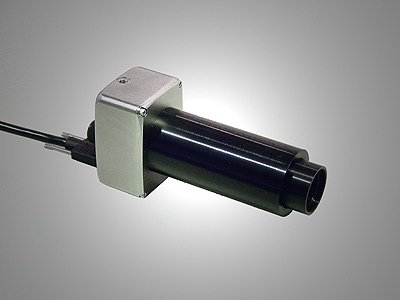 |
eFinder scope attached to production Remote Guide Head |
The eFinder was originally made for the STV and is designed to cover the 237 CCD with high quality star images for most accurate guiding. No aiming is necessary as the 2.8 x 2 degree field of view guarantees that suitable guide stars will always be found no matter where in the sky the eFinder is pointed. The eFinder's doublet lens is also an achromatic FR237 focal reducer when removed from the long eFinder tube. It can be screwed into the nosepiece of the Remote Guide head and used as a high quality 0.375X focal reducer on a separate f/6 to f/10 telescope.
Back Plate with Rack Handles
A small but convenient improvement seen on the ST camera body on this page is the addition of Rack Handles to the back plate of ST-7/8/9/10/2000 cameras similar to the ones on the STL series. These handles make the camera easier and safer to handle, especially in cold weather when wearing gloves or when the camera system includes a color filter wheel and AO-7. They also provide a convenient place to attach a safety strap to prevent the camera falling to the ground in event of an accident.
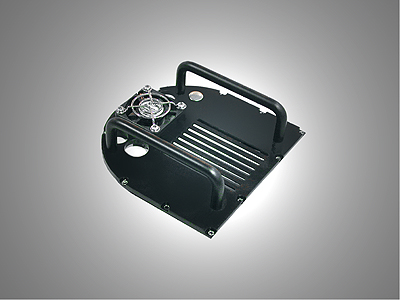 |
ST-7/8/9/10/2000 replacement back plate assembly |
A replacement back plate assembly, including rack handles, fan with guard, status LED and wiring harness with connectors is available as a plug-in replacement for existing ST-7/8/9/10/2000 cameras. If you are comfortable drilling holes in your existing back plate, the Rack Handles are available separately. For a drawing of the required hole pattern, click here.
Upgrades:
As of the date of this announcement (March 17, 2006) all new ST-7/8/9/10/2000 cameras and single sensor "I" version of these cameras include the Remote Head port. All that is needed is to plug in the optional Remote Head to have external guiding. An upgrade for Remote Guide Head support is also vailable for all ST-7/8/9/10/2000 cameras. For cameras made after August 1, 2005, the upgrade consists of installation of a an additional circuit board inside the camera body and replacement of the round portion of the camera body with a new housing containing the necessary connector. For USB cameras made before August 1, 2005, we must also add a new analog board. For parallel cameras with "E" or "ME" CCDs, we must also do the full USB upgrade, and a 237 tracking CCD upgrade. The Remote Guide Head and cable are sold separately. The same Remote Guide Head can be switched between any STL or ST-7/8/9/10/2000 camera. For the latest prices of new cameras with Remote Head port, upgrades and accessories please check our Current Price List.
If your USB camera was made a month or so prior to August 2005 (or your parallel camera was upgraded to USB just prior to August 2005) there is a possibility that it has a newer analog board and can be upgraded for the lower price, as there was some overlap in the phasing in of the new board types. We can tell you when you send your camera in, or you can check it yourself first. A quick visual inspection can tell you which version of the board is installed. The latest version has an obvious semi-circular cut-out at the 8 o'clock position in the circuit board (viewed with the CCD at the 12 o'clock position). You must open the front cover of the camera to see the board. After you have checked the board and re-secured the cover plate, you should bake the desiccant plug per the instructions in the manual to assure a dry chamber the next time the camera is used. To check the board, remove the six socket head screws around the perimeter of the front plate and lift it off. You will see the bow-tie shape shutter and underneath it the CCD, tracking mirror, shutter motor and the analog board. When you are looking at the open chamber, with the CCD at the 12 o'clock position, if you see the same semi-circular cut out in the green analog board that is shown in the photo below, then your camera has the latest board version and can upgraded for Remote Head support at the lowest price. If there is no semi-circular cut-out, then the board will have to be replaced as part of the upgrade. If you have to move the shutter to see this, just carefully nudge it around. Be careful not to press down on it or bend it. When you are done, make sure the o-ring is properly set in place and is not pinched when you replace the front cover. Double check this before you tighten up the screws. A pinched or damaged o-ring is the most common cause of moisture leaking into the chamber over time.
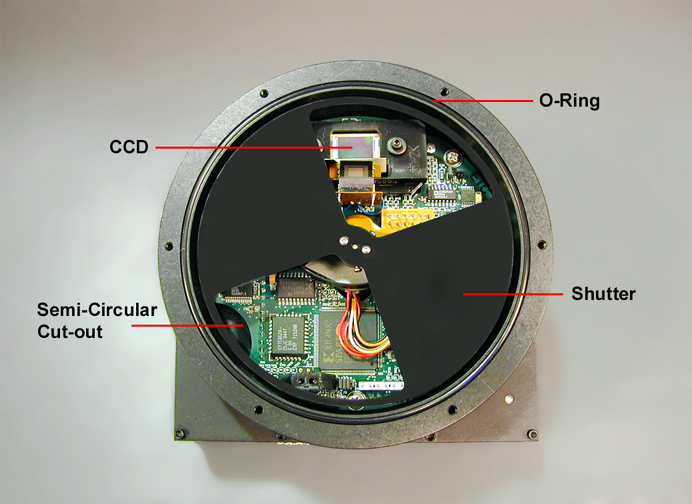 |
Note: The Remote Guide Head upgrade is available only for ST-7/8/9/10/2000 cameras. It is not available for the ST-402, ST-1603 or ST-3200 cameras. Parallel cameras that were upgraded to USB after August 1, 2005 probably received the latest analog board the same as newly manufactured USB cameras. However, a USB camera manufactured before August 1, 2005 that received a CCD upgrade after August 1, 2005 probably did not require a new analog board as part of the CCD upgrade and will require a new analog board for the Remote Guider Head upgrade. In either event, the visual check above will tell whether or not you need to have the analog board replaced.
Note: The Remote Guide Head pictured above in black is a prototype model with no desiccant plug. The production version will be the same size and shape, but it will have a desiccant plug under the Molex connector in the back and it will have the bead blasted nickel finish identical to the STL series cameras (it will be the same Remote Head as sold for the STL cameras) as shown in the pictures below. In addition to the eFinder guide scope, the Remote Guide Head is compatible with many imaging accessories such as the T-to-C Adapter for C-mount camera lenses, the CLA5 camera lens adapter for some popular 35mm camera lenses, a 2" nosepiece, or virtually anything with a T-thread interface. The face plate of the Remote Guide Head contains female t-threads. A male-to-male t-thread adapter is also available.
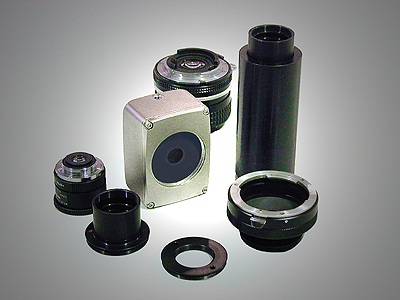 |
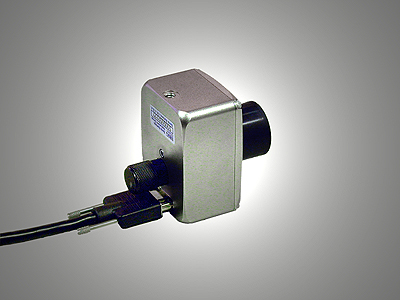 |
Remote Head accepts a variety of adapters and lenses |
No tools are required to remove the desiccant plug |
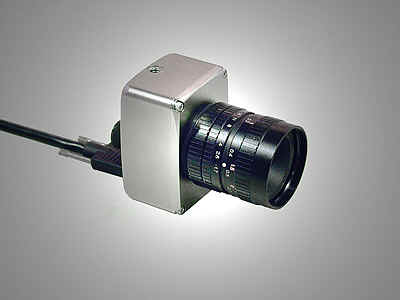 |
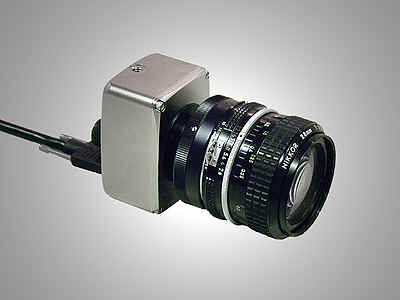 |
C-mount lenses are small and lightweight with wide FOV |
35mm Camera Lens Adapter for Nikon and other brands |
| Lens Focal Length |
237 CCD FOV in Degrees |
| 8 mm | 35 x 26 |
| 12.5 mm | 22 x 17 |
| 25 mm | 11 x 8 |
| 50 mm | 6 x 4 |
| 100 mm | 2.8 x 2.1 |
| 135 mm | 2.1 x 1.6 |
| 200 mm | 1.4 x 1 |
| 300 mm | 0.9 x 0.7 |
Camera Prices Upgrade Prices Ordering Back to Products
Revised:
April 03, 2007 10:19:24 AM.
Copyright © 2006 Santa Barbara Instrument Group, Inc. All rights reserved.
Please report any problems with this page directly to the Webmaster